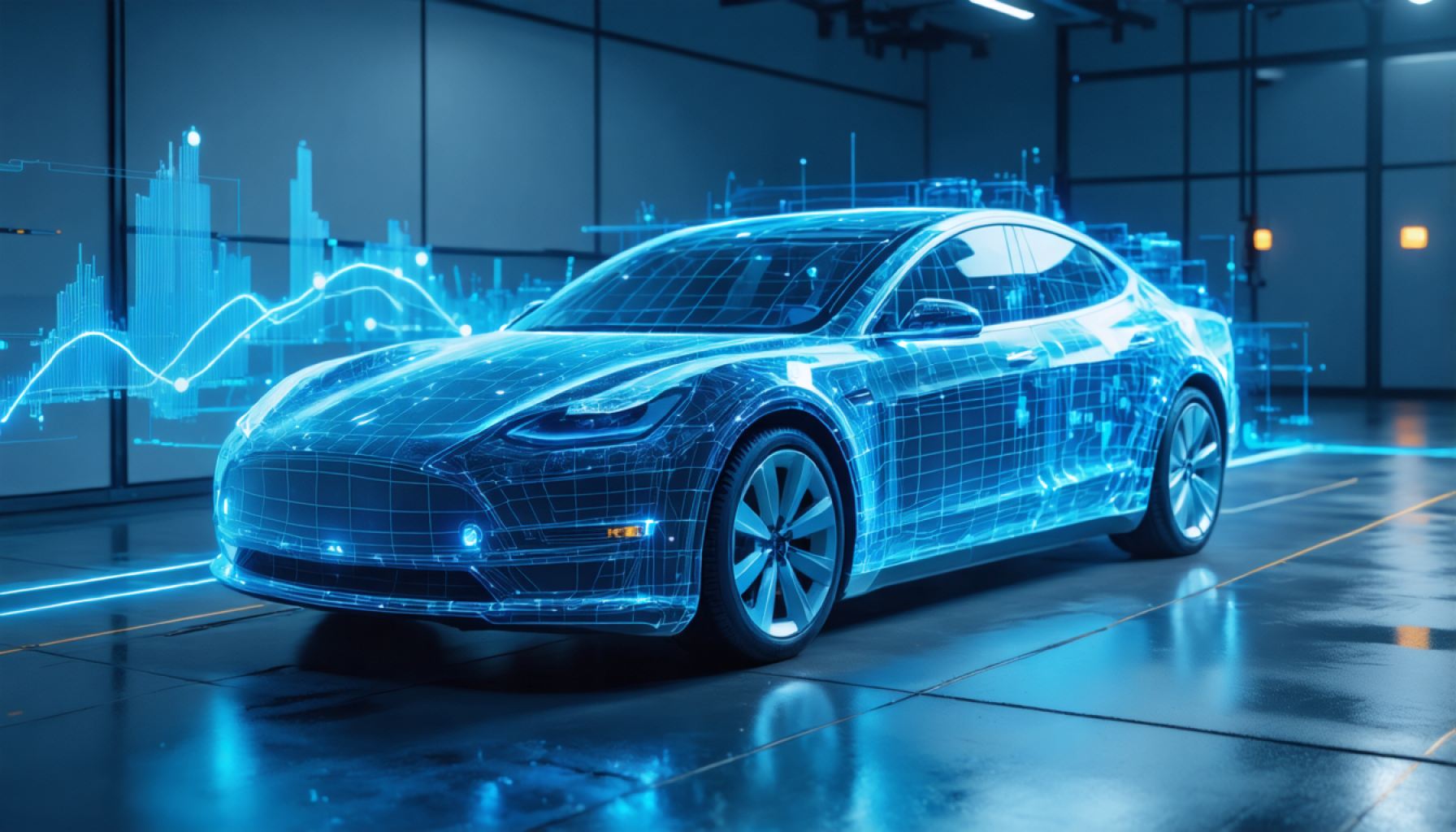- Electric vehicle (EV) market growth hinges on effective battery cooling plates, crucial for ensuring vehicle safety and longevity.
- The market for battery cooling solutions is projected to expand from $3.1 billion in 2024 to $11.9 billion by 2031, growing at a compound annual growth rate of 21.2%.
- The passenger car segment dominates, expecting to hold a 72.5% market share by 2024, driven by evolving battery capabilities requiring sophisticated cooling systems.
- Asia-Pacific leads the market due to government incentives and technological advancements, with China’s innovation at the forefront.
- Next-gen thermal management designs, AI, IoT, and ultra-fast chargers are advancing cooling system capabilities but come with high costs.
- Opportunities arise in electric commercial vehicles and immersion cooling systems, offering solutions for larger batteries.
- The EV battery cooling plate market reflects the broader journey toward a sustainable future, crucial to overcoming engineering challenges.
The hum of the electric engine has become a common soundtrack in our urban symphonies, signaling a shift towards a cleaner, more sustainable future. At the core of this transformation lies not just the electric vehicle (EV) itself, but a game-changing component: the battery cooling plate. As EV market demand accelerates, effective battery cooling solutions have emerged as unsung heroes, ensuring the longevity and safety of electric vehicles worldwide.
Imagine a world where EVs glide silently along the highways, drawing energy from massive battery packs protected and optimized by advanced cooling systems. This vision is supported by a market that’s projected to soar from $3.1 billion in 2024 to a staggering $11.9 billion by 2031, revealing a robust compound annual growth rate of 21.2%. The catalyst driving this renaissance is the electric vehicle adoption wave, amplified by government policies enforcing stricter emission norms to fight climate change.
One can’t underestimate the role of the passenger car segment in this growth, poised to capture a dominant share of 72.5% by 2024. These vehicles, increasingly equipped with formidable battery capabilities, demand more sophisticated cooling systems to manage heat during fast charging sessions and high-power uses. The market’s heart beats fastest in the Asia-Pacific, where a symphony of strong government incentives and technological advances plays out. China’s frontline status in EV innovation and infrastructure development amplifies demand for stellar battery cooling solutions.
The narrative is not just about growth but innovation. Next-generation thermal management designs offer new promise, making cooling systems lighter yet more powerful. The integration of AI and IoT enables real-time monitoring of battery temperatures, ensuring peak operational efficiency. The advent of ultra-fast chargers, capable of delivering 350 kW and beyond, further fuels innovation in the sector. These technological leaps drive the need for advanced cooling systems to manage the surging heat of quick charging cycles.
However, challenges loom on the horizon. With innovation comes cost. The high price of state-of-the-art thermal management systems could potentially deter budget-conscious EV manufacturers. The complexity of integrating these advanced solutions into existing vehicle designs adds another layer of difficulty, especially for smaller players with limited research and development capability.
But where there’s challenge, there’s also opportunity. The rise of electric commercial vehicles—buses and trucks—creates a new frontier. These vehicles, armed with larger batteries, necessitate customized thermal management solutions, offering a ripe market ripe for exploration. Furthermore, immersion cooling systems, which dunk batteries into insulating fluids, emerge as promising contenders for superior heat management.
Ultimately, the story of the electric vehicle battery cooling plate market is one of transformation and potential. The race to manage battery heat more effectively is not merely an engineering challenge but a pivotal component of the journey towards a cleaner tomorrow. As technology progresses and demand rises, these cooling systems will continue to quietly propel the electric vehicle revolution, underscoring the essential synergy of innovation and necessity in paving the road to the future.
The Future of Electric Vehicles: Unlocking the Secrets of Battery Cooling Technology
The Unsung Heroes of EVs: Battery Cooling Plates
The electric vehicle (EV) revolution is well underway, driven by the pressing need for sustainable transportation solutions. While EVs’ sleek designs and eco-friendly promises capture our imagination, it’s their internal components, such as battery cooling plates, that ensure efficient and safe operation. In an industry projected to grow from $3.1 billion in 2024 to $11.9 billion by 2031, the technology behind effective thermal management is more crucial than ever.
How Battery Cooling Plates Work
Battery cooling plates are designed to absorb, distribute, and dissipate heat generated during battery operation. They help maintain optimal temperatures, which is vital for battery longevity and safety. The cooling plates are typically composed of materials like aluminum or copper, known for their high thermal conductivity. Their design involves channels or intricate patterns for coolant to flow through, effectively regulating the battery’s temperature during charging and discharging cycles.
Innovations and Real-World Use Cases
– AI and IoT Integration: Modern cooling systems leverage AI and IoT for real-time thermal management, offering predictive maintenance and enhanced performance metrics.
– Ultra-Fast Charging Compatibility: With the advent of ultra-fast chargers delivering 350 kW+, advanced cooling solutions are essential to prevent overheating during rapid charging.
– Commercial Applications: Beyond passenger vehicles, battery cooling technology is crucial for electric buses and trucks. These commercial vehicles house larger battery packs that demand sophisticated cooling solutions.
Market Trends and Predictions
– Passenger Cars Leading the Charge: The market forecast suggests a dominant share for passenger cars, with an estimated 72.5% hold by 2024. The demand stems from increased battery capacities necessitating effective thermal management.
– Asia-Pacific as a Growth Leader: The Asia-Pacific region, particularly China, leads in EV adoption due to robust government incentives and advancements in EV infrastructure. This growth propels the demand for state-of-the-art cooling solutions.
– Emerging Cooling Techniques: Immersion cooling, where batteries are submerged in non-conductive fluids, represents a novel approach to managing thermal output in high-demand scenarios.
Challenges and Opportunities in the EV Cooling Market
Although cutting-edge thermal management systems offer substantial benefits, their high cost may deter budget-conscious manufacturers. Additionally, integrating these systems into existing vehicle designs poses challenges, requiring substantial research and development investment.
New markets are emerging, specifically in commercial EVs, where larger battery sizes present opportunities for customized cooling solutions.
Expert Insights and Controversies
While the efficacy of these systems is universally acknowledged, debates surround their cost-effectiveness and sustainability. Current research, such as a study from the Journal of Energy Storage, underscores the importance of balancing advanced technology costs with achievable economic benefits.
Quick Tips for EV Owners
1. Monitor Software Updates: Ensure your vehicle’s thermal management software is up-to-date for optimal performance.
2. Regular Maintenance: Schedule routine checks with certified technicians to ensure cooling systems function correctly.
3. Charging Habits: Avoid excessive fast charging to reduce thermal stress on the battery.
Final Thoughts
As the EV market accelerates, the role of efficient battery cooling solutions becomes increasingly significant. With technological advancements and market demands driving innovation, the path ahead holds immense promise for enhanced EV performance and sustainability.
For more comprehensive insights into the electric vehicle industry, visit the official EV website.







